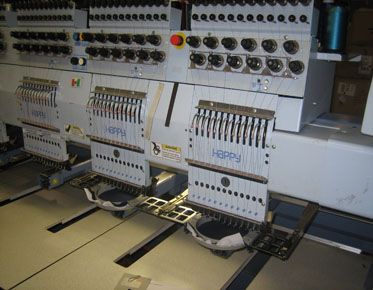The Impact of Embroidery Digitization on The Textile Industry
Embroidery digitization has made a significant impact on the textile industry in recent years. With the increasing popularity of computerized embroidery machines, this once time-consuming and labor-intensive craft has become much more efficient and accessible. In this blog post, we will explore the impact of embroidery digitization on the textile industry and how it has changed the way we approach this craft.
The first major impact of embroidery digitization is the speed at which designs can now be created and produced. Traditional hand-embroidery is a slow and labor-intensive process that can take hours or even days to complete a single design. With the advent of computerized embroidery machines, the time required to produce a single design has been significantly reduced. In fact, with digitization, an entire design can be created and produced in a matter of minutes. This has allowed for the production of high-quality embroidery to become much more efficient and cost-effective.
Another impact of embroidery digitization is the increased accuracy and consistency of designs. When embroidering by hand, variations in stitch length, tension, and other factors can result in designs that are not exactly the same from one piece to the next. With digitization, designs can be created on a computer and then programmed into the embroidery machine, ensuring that each piece is exactly the same. This not only saves time but also results in a more professional and consistent finished product.
In addition, embroidery digitization has allowed for a greater level of creativity and design complexity. With traditional hand-embroidery, there are limits to the size and complexity of designs that can be created. With digitization, however, designers can create intricate designs that are not possible by hand, including designs with multiple colors, different stitch types, and varying stitch lengths. This has opened up new possibilities for designers to create unique and eye-catching designs that were not previously possible.
Furthermore, embroidery digitization has
made it easier for small businesses and individuals to enter the textile
industry. With traditional hand-embroidery, there was a high barrier to entry
due to the time and skill required to produce high-quality designs. With
digitization, however, anyone with a computer and an embroidery machine can
produce professional-quality designs. This has made it easier for small businesses
and individuals to enter the market and compete with established companies.
In conclusion, the impact of embroidery
digitization on the textile industry has been significant. From increased
efficiency and accuracy to greater design complexity and accessibility,
digitization has revolutionized the way we approach this craft. Whether you are
a seasoned professional or just starting out, there has never been a better
time to explore the world of embroidery and all it has to offer.

